How To Increase Your Amazon Affiliate Income As A Travel Blogger [Ep. 79]
By Jessie Festa. This episode on how to make money as an Amazon Associate contains affiliate links to trusted partners I think you’ll love!
Interested in learning powerful Amazon affiliate marketing tips and tricks?
Well, you’re in luck, as in this episode of The Profitable Travel Blogger Podcast, we’ll be going over how to make money as an Amazon affiliate – creative strategies included!
By the end of this episode, you’ll understand:
- Why you should join the Amazon Associates affiliate program
- How to create an effective affiliate marketing content strategy
- Amazon affiliate best practices for seeing success
- Advanced strategies for increasing your Amazon affiliate income as a blogger
- Mistakes to avoid if you want to see success with the Amazon affiliate program
- And more!
In short, you’ll snag loads of ideas for monetizing your blog with Amazon affiliate products!
Amazon Affiliate Marketing Tips [Podcast Episode Audio]
Click here to listen on Apple Podcasts/iTunes
Click here to listen on Spotify
Click here to listen on Amazon Music
Click here to listen on TuneIn
Free Travel Blogger Resource Library
To help you really jumpstart your blogging success, I’ve added 50+ blogging resources like printables, video tutorials, and workbooks into a FREE resource library for travel bloggers.
These resources are meant to help you grow your traffic, community, and income faster and with less overwhelm!
See Amazon Affiliate Marketing Success With These Helpful Tools:
LTK. Formerly known as LIKEtoKNOW.it, this platform allows influencers, bloggers, and content creators to monetize their content by linking to products they recommend through affiliate marketing. It also offers a workaround for adding Amazon links to emails.
Online Broken Link Checker. This free tool can help you locate and update broken links, including broken Amazon affiliate links!
Keysearch (snag 30% off with code “jessieonajourney30”). When trying to optimize your affiliate posts to rank in Google, Keysearch can help you do your important keyword research. This budget-friendly yet robust tool helps me consistently rank my content in the top of organic search results!
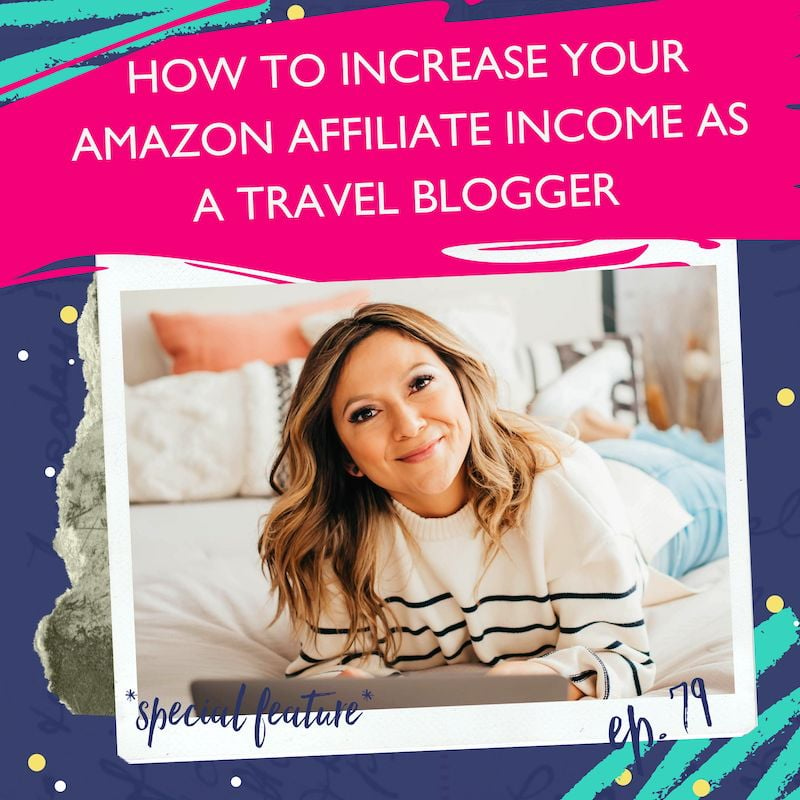
Is Amazon Affiliate Marketing Profitable? [Episode Transcript]
The following is a summary of the podcast episode sharing Amazon affiliate marketing tips, with paraphrased responses. For the full strategy on how to make money with the Amazon affiliate program, make sure to listen to the audio version of the podcast above.
There are many ways to monetize a travel blog, though one of the first revenue streams creators typically implement is affiliate marketing. And one of the most popular affiliate programs to join is Amazon Associates.
Of course, it takes more than simply joining Amazon’s affiliate program to actually earn money – which is why I’m so excited to be chatting with today’s guest, Alexandra Jimenez of Travel Fashion Girl.
Alex has built a 7-figure blogging business, with the majority of her income coming from affiliate marketing. In this episode, she’ll be sharing her best tips on how to see success as an Amazon affiliate.
Free travel blogger resource library
But first, before we go over how to do affiliate marketing on Amazon, I want to share my free Travel Blogger Resource Library.
Inside you’ll snag access to 55+ resources from cheat sheets to workbooks to workshops to video tutorials that can help truly turn your blog into a profitable business – including a Crafting Profitable Affiliate Posts Workbook.
I’m all about implementation and I really want to make sure you don’t just listen to the episode and forget about it, but that you actually use what I share to make your blogging life easier. Feel free to even pause this episode to go grab those resources.
You back? Then let’s dive into how to see success with affiliate marketing through Amazon!
1) Thank you so much for taking the time to share your tips! To start, can you tell us more about yourself, your blog, and how you got into affiliate marketing?
Absolutely, I had the pleasure of launching Travel Fashion Girl in 2012.
The essence of Travel Fashion Girl is to guide female travelers on how to pack light, regardless if they’re planning on using a carry-on or checking a bag. It’s all about the nitty-gritty of packing: what to pack, and what to wear during their travels.
Just like everyone else, initially, I had the pervasive question: how does one make money from blogging?
The advice I stumbled upon was a bitter pill to swallow at the moment – “Create amazing content and they will come.”
Despite finding it slightly frustrating, I took it to heart and focused on generating a lot of valuable content.
Fast forward 6 months, and I was fortunate to have a mentor who shed light on a revenue-generating path – affiliate marketing. He suggested that I could earn by linking to the items I was referring to in my content.
Initially, I was discussing various products in my posts without realizing that I could monetize these mentions through affiliate links. But once I had this insight, I started embedding affiliate links to products, and that decision was a turning point.
Given the product-focused nature of my blog, affiliate marketing dovetailed nicely with my content, and quickly became a significant source of revenue.
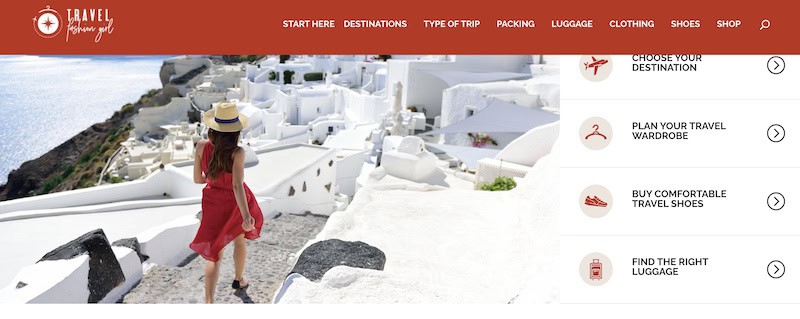
2) So let’s start with the basics. Why should bloggers join Amazon’s affiliate program? And is the program right for everyone?
Let’s start with a little Amazon affiliate marketing for beginners lesson. Joining Amazon’s affiliate program is a no-brainer for bloggers and content creators, primarily because of Amazon’s universal appeal.
Almost everyone shops on Amazon, making it a logical choice to link to this popular retailer through the Amazon Associates Program and earn revenue from it.
Amazon is popular
One of the top reasons why Amazon Associates stands out as a lucrative revenue source is the sheer volume of traffic Amazon receives. It’s arguably the number one retailer that people trust and prefer, thanks to perks like next-day shipping, which comes in handy, especially for last-minute shopping before travels.
Amazon offers revenue-boosting opportunities
Additionally, Amazon’s affiliate program offers a distinctive way of earning revenue. When you recommend a product, say a backpack or a suitcase, and someone clicks on your link to buy it, Amazon’s current policy allows you to earn revenue on the entire cart of purchases, not just the item you linked.
This means if someone goes to Amazon through your link, adds a suitcase to their cart, and proceeds to check out with an array of other products – be it other travel accessories, groceries, or even a sofa – you get commission on the entire shopping cart.
Even if your article discusses lower-priced items like travel adapters, but a visitor makes larger purchases, the Amazon affiliate commission is on the whole cart. This aspect alone highlights the immense earning potential associated with Amazon’s shopping cart model.
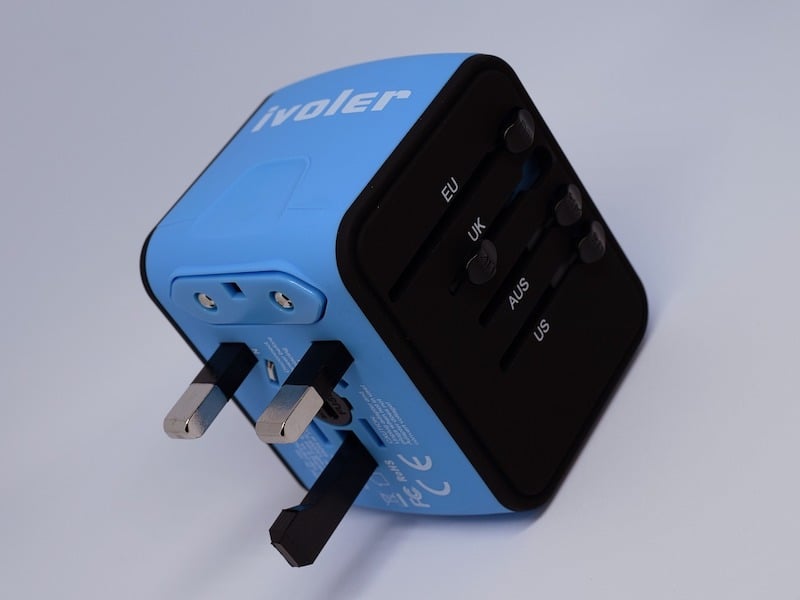
3) What types of Amazon products can you earn affiliate income from? And is there a way to choose which would be best to promote to your specific audience?
Essentially, you can link to anything and everything sold on Amazon. Interestingly, Amazon has varying commission rates depending on the category of the products linked.
For instance, electronics and clothing have different commission rates. Upon signing up for the Amazon affiliate program, you can review your commission table earnings, which can vary from person to person.
But, how to decide what Amazon products to link to?
One of my top Amazon affiliate marketing tips is to start with what you use and love. Sharing your personal favorites is an authentic way to engage your audience.
For instance, during my travels, my Osprey Farpoint backpack was my go-to companion. I wrote a review sharing my love for it and linked to Amazon where my readers could purchase it.
There’s an immense advantage in promoting products you have a personal connection with. It not only builds a revenue strategy but a blog brand strategy.
Building trust with your audience increases affiliate clicks
Some bloggers may focus on SEO-worthy items or those perceived to bring in more money, but this approach can be quite competitive and less personal. Instead, sharing your unique preferences or needs with your audience creates a distinctive space amidst the commonality, and that’s where the real connection happens.
For example, despite the shift in purchasing behavior during the pandemic, my audience continued to trust my recommendations. This trust stems from an authentic sharing of products that resonate with me, whether it’s a specific brand of contact lens cases for travelers or cookware for those who enjoy cooking at Airbnbs.
The overarching idea is to share what genuinely appeals to you, not what you think should appeal to others or what appears on every other packing list.
This personalized approach not only helps in standing out but cultivates a trusting audience who are more likely to follow through on your recommendations, both now and in the future.

4) When sharing personal Amazon product recommendations, how do you make it clear you’re being genuine and authentic, even when using an affiliate link?
Authenticity is my cornerstone when it comes to sharing product recommendations, especially within the framework of affiliate marketing. A significant part of maintaining this authenticity is owning and using the products I endorse.
I don’t usually work with brands for sponsorship, and there’s a reason behind it.
Let’s take Osprey, a brand I adore, as an example. My enthusiasm for Osprey backpacks was so palpable on my blog that other bloggers reached out for a supposed sponsorship contact. But, in reality, it was just my genuine love for the brand shining through.
This love for the products I recommend isn’t manufactured or paid for, which is why I shy away from brand sponsorships.
If a brand sends me a product and it doesn’t resonate with my values or expectations, I prefer sending it back rather than forcing a positive review. This way, I don’t feel obliged to write a review that doesn’t echo my true experience with the product.
I’ve found that purchasing products personally for review is a strategy that aligns well with my values.
For instance, during sale events like Prime Day or the Nordstrom Sale, I buy products that catch my eye.
This approach not only ensures authenticity but also affords me a practical insight into the product’s value. There’s no obligation to write a review, and when I do, it’s based on my real, personal experience, which my audience appreciates.
Sharing a unique perspective is paramount.
Even if another blogger and I are using the same product, our rationale and experiences might be very different. I ensure my content shares my unique rationale and experience which not only enriches the narrative but also underscores the authenticity of my recommendations.

5) Getting more into strategy, I know you use an “affiliate content trifecta” method to promote your affiliate links. Can you explain this?
This is one of the most important parts of my Amazon affiliate marketing strategy!
The concept of the “affiliate content trifecta” emerged from a pressing need to adapt during the challenging times in 2020, especially when the travel sector took a hard hit.
My strategy initially was heavily dependent on my blog, Travel Fashion Girl, which featured over 2000 blog posts, each optimized for monetization and SEO; however, 2020 underlined the importance of having an engaged audience which led to a more audience-centric approach.
The fundamental shift was recognizing that the audience isn’t just on the blog; they’re interacting on various platforms like Facebook and engaging through newsletters.
I managed a robust Facebook community of over 100,000 members before it was shut down. As I looked at the organic interactions between members, I saw that my audience sought more than just travel product tips; they were interested in a wider spectrum of product advice that came from a trusted source, and that was me.
The trifecta unfolds through three steps: content creation based on audience queries, adaptation of this content across different platforms, and promoting affiliate links through these channels in a manner that resonates with the respective audience on each platform.
As we’re diving deep into Amazon affiliate marketing tips, let me expand on each here:
Content Creation: In terms of Amazon affiliate marketing ideas for content, my strategy begins with looking at direct queries or discussions within the community, be it on Facebook or via emails.
For instance, if someone inquires about packing tips for Bali, that’s a cue for a blog post that not only addresses the query but is also optimized for SEO using tools like Ahrefs and Keysearch.
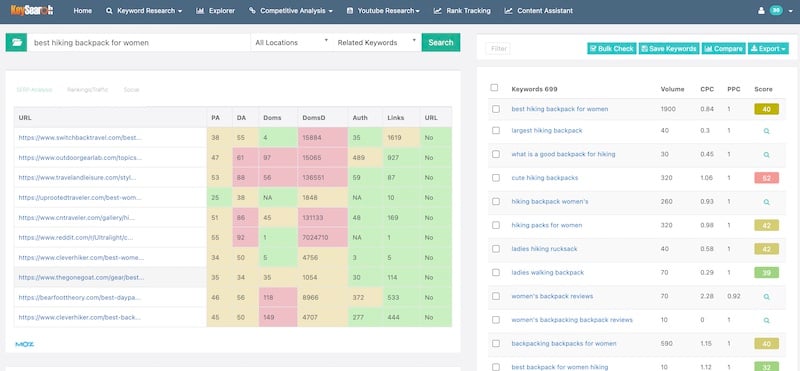
Content Adaptation: Once the blog post is crafted, the content is then tweaked to suit the conversational tone of the Facebook community. The same core content is also rephrased in a more personal tone for the newsletter audience.
This adaptation ensures the content feels native to each platform, thereby fostering a more authentic connection with each unique audience.
Promoting Affiliate Links: Finally, I add affiliate links. On the blog and Facebook, I can directly link to Amazon; however, newsletters present a challenge since Amazon Associates’ program terms prohibit direct linking.
Luckily, a third-party affiliate program called LTK solves this issue, as you can share the same product links in the newsletter without breaching any terms.
6) Amazon has a few different programs for bloggers looking to earn a commission promoting their products – like Amazon Associates and the Amazon Influencer Program. What is the difference between these programs?
When it comes to the Amazon affiliate program for bloggers and creators who own their own websites, I typically recommend Amazon Associates over the Amazon Influencer Program. To make it clear why, let’s compare the two:
Ownership of Content:
Amazon Associates: This program is something I recommend for bloggers since it empowers us to maintain control over our content, ensuring it stays on our blogs. This way, we keep the traffic and can generate revenue through various channels like ads or direct digital product sales on our site.
Amazon Influencer Program (Amazon Storefront): Conversely, in this setup, our content is hosted on Amazon’s platform, meaning we don’t own or control that content. If there are any changes to the program or if it gets discontinued, we could lose all the content hosted there.
Monetization Potential:
Amazon Associates: By channeling traffic to our blogs, we can monetize that traffic in numerous ways apart from affiliate commissions, such as through display ads or selling ebooks.
Amazon Influencer Program: The revenue potential here is restricted solely to affiliate commissions from Amazon.
SEO (Search Engine Optimization):
Amazon Associates: We have the liberty to optimize our content for SEO, making it more discoverable on search engines, and subsequently driving more traffic to our blogs.
Amazon Influencer Program: The SEO advantages are either non-existent or severely limited as the content is hosted on Amazon’s platform. Plus, we’re essentially driving traffic away from our sites to Amazon.
Revenue Comparison:
I’ve noticed from my experience that the revenue generated through Amazon Associates appears significantly higher compared to the Amazon Influencer Program. For instance, revenue from single links shared on my Facebook group through Amazon Associates far outweighed that from the Amazon Influencer Program.
Data and Tracking:
Amazon Associates has better data and tracking capabilities for each Amazon affiliate link, which can be important for comprehending and optimizing performance.
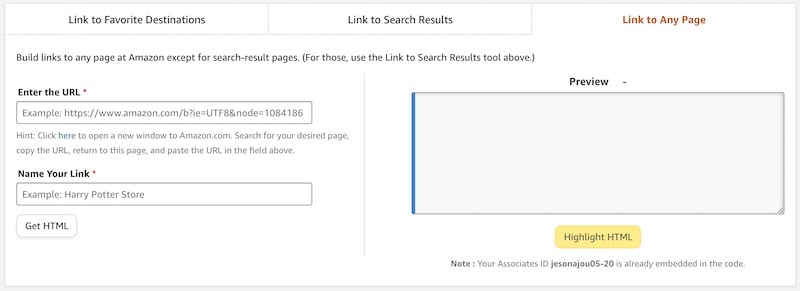
7) There are a lot of Amazon affiliate marketing tips for beginners out there; but, do you have any advanced strategies for how to make money as an Amazon affiliate?
Absolutely! A few of my best advanced tips for Amazon affiliate marketing include:
Utilize unique tracking IDs: One amazing feature of Amazon Associates is the ability to create unique tracking IDs for each blog post and page, such as a resource page with affiliate links.
This allows for a deeper understanding of buying behaviors associated with different pieces of content – which you can use to better understand what actually works when it comes to increasing your affiliate income. Honestly, the most successful Amazon affiliates look at the data.
Adjust content for trends: By reviewing the data from Amazon Associates, it’s possible to spot trends in audience preferences. This is one of the most important Amazon affiliate marketing tips to understand.
For example, despite frequent mentions of Osprey, a one-time mention of Samsonite led to significant purchases. This kind of trend spotting prompts further exploration and content creation around products or brands that resonate with the audience.
Review popular product models: The data also highlights popular product models, enabling adjustments in content to better align with audience preferences.
For instance, when I noticed a different model of an Osprey backpack being purchased, I created a new review of that model – which led to an increase in engagement and affiliate earnings.
Pay attention to color preferences: By noticing color preferences among products, it’s possible to align the visuals on the blog with the colors that are being purchased more. This small adjustment can make the content more appealing and relatable to the audience.

8) Are there any ways to use the Amazon affiliate program to grow your relationship with individual brands?
The Amazon Affiliate program doesn’t offer a direct way to grow relationships with individual brands, especially as the brands often don’t get access to data regarding who is driving the sales for their products on Amazon.
However, there are some workarounds in terms of using your Amazon affiliate status to grow relationships, like:
Leverage sales data for brand outreach: By analyzing your sales data from Amazon Associates, you can see which products or brands are popular among your audience. From there, you could reach out to the brands you do well with to demonstrate your influence and propose collaborative opportunities.
Do outreach based on popular items: Looking at the data, if you notice certain items like power adapters are selling well, it can prompt you to reach out to relevant brands, such as Anker, to explore partnership opportunities. This proactive outreach, backed by data, could open doors for product reviews, sponsored posts, or other collaborative projects.
Utilize alternative affiliate platforms for direct brand relationships. Platforms like Avantlink and ShareASale have structures in place where each brand has a representative you can interact with and explore partnership opportunities. If they see you doing well, they might even reach out to you to explore collaboration ideas.
Leverage brand-specific affiliate programs: Brands often have their own affiliate programs which can be found either through a simple Google search or by checking the brand’s official website. With these, you’ll have direct access to the brand to build a deeper relationship.

9) What are the biggest mistakes you see bloggers who are trying to increase their Amazon affiliate income make?
While we’ve gone over some of my top Amazon affiliate program tips, here are some of the top mistakes I see bloggers make when trying to increase their Amazon affiliate income:
Lack of product linking: By not providing links to the products and services you mention in your content, you miss the chance to earn affiliate income and also risk frustrating readers who are keen on following your recommendations.
Ignoring audience curiosity: Bloggers often underestimate their audience’s curiosity about the products and services they use. When followers express interest in your choices, such as airlines, booking websites, or even the packing tools used, it’s an indication of an opportunity to include affiliate links.
Misunderstanding of audience skill level: Often bloggers forget that not every reader possesses the same level of knowledge or expertise in a particular field.
For example, a cooking blogger might overlook linking to a specific type of pan assuming their audience knows what it is, while in reality, some readers might be unfamiliar with it and would appreciate a link to purchase it.
Another example: distinguishing between a backpack and a day pack may seem trivial to a travel blogger, but it might not be for a reader new to traveling.
Inadequate explanation and recommendations: Bloggers sometimes fall short in explaining why they prefer certain products or services, and where to get them. Providing a thorough explanation and linking to the products or services can significantly enhance the user experience and potentially increase affiliate income.
Not updating links: Finally, one of the most important Amazon affiliate marketing tips is to make sure your links actually work. In instances where a product is no longer available, bloggers often forget to link to similar items. It’s a missed opportunity as readers might be interested in purchasing similar alternatives even if the exact product is unavailable.
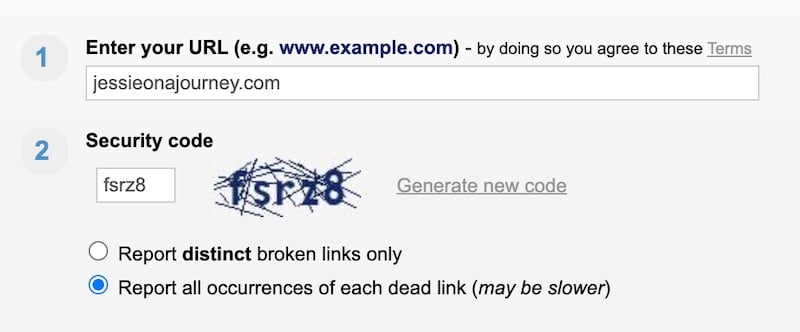
10) Thank you so much for sharing your wisdom! Before we sign off, can you let everyone know where they can find you?
Alright, now I hope you enjoyed this episode sharing Amazon affiliate marketing tips. I hope you feel inspired and empowered to start promoting your Amazon affiliate links in creative ways that can help you increase your travel blogging income.
Before you go, don’t forget to grab access to the free Travel Blogger Resource Library. There are a ton of resources in there on growing your community and increasing your blogging profits.
And of course, make sure to subscribe so you don’t miss future episodes sharing these bite-sized strategies for bloggers who want to turn their blogs into profitable full-time businesses.
Happy blogging!
Master Affiliate Marketing With These Helpful Past Episodes:
How To See Success With Affiliate Marketing For Travel Bloggers
15 Creative Ways To Promote Affiliate Links As A Blogger
How To Create A Resources Page That Grows Your Affiliate Income
How To Use White Label Affiliate Programs To Monetize Your Blog
How Niching Down Can Help You Grow & Monetize Your Blog
How To Find Niche Keywords By Doing Competitor Research
How To Reach Your Blogging Goals Faster With Outreach Days
How To Update Website Content For Increased Traffic
How To Plan Out A Year Of Content In One Week
Click here for all profitable blogging podcast episodes.
Connect With The Profitable Travel Blogger Podcast
Stay In The Loop
Do you want to get notified when new episodes publish?
Then make sure to opt-in for podcast email notifications sent to your inbox!
You can do that by clicking here.
Subscribe + Review (To Win A Prize!)
Love learning new blogging strategies to help grow your website traffic, community, and income?
Click here to subscribe on iTunes to be notified when new episodes publish.
I’d also be extremely grateful if you’d leave a review right here and let me know your favorite part of the episode or a takeaway you walked away with. By leaving a review, you help the show be seen by more people, helping the episodes to have a greater impact.
Bonus:
Each month, I’ll be choosing one reviewer at random to win a FREE seat inside one of my masterclasses.
Winners can choose from:
- How To Grow Your Blogging Income Through Facebook Ads
- How To Land Paid Press Trips As A Travel Blogger
- How To Make Money (Fast) With Affiliate Marketing
- How To Start A Tour Company In Your Own Backyard
- How To Start A Blog, Grow An Audience & Make Money
- Build Your Blogging Profit Plan Masterclass
Winners will be chosen at random from the reviews and will be notified via email, so make sure to send me — jessie (at) jessieonajourney dot) com — your email address so I have it.

